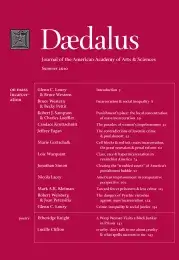Clearing the “troubled assets” of America’s punishment bubble
An analogy can be drawn between the troubled assets that contributed to the recent economic crisis and the “troubled assets” of mass incarceration. The former now endanger the survival of the U.S. financial sector (indeed, our entire economy); the latter endanger the fiscal viability and democratic legitimacy of the state. The crucial challenge facing reformers is how to “clear” the complex aggregations of human beings, social and financial capital, information networks, political alliances, and managerial practices that were produced during the long period in which we inflated both the economic and carceral bubbles. In both cases, we must establish new norms and procedures for assessing risk and promising security. We also must recognize the opportunities that the present disasters have created for reinvigorating our economy and democracy. California is the extreme example of this public-sector crisis and is useful as a means to identify strategies for unwinding mass incarceration.
As George Lakoff, Mark Johnson, and other students of cognition have demonstrated, metaphors are far more than literary frills that excite and, perhaps, expand the imagination. Instead, they are cognitive colonizers, spreading from one part of our thinking to affect other areas. They can reorganize how we understand ideas and concepts and how we act on that understanding.1 When powerful metaphors sweep through government, they can reorganize our democracy, too. The “war on crime” has proven to be one such metaphor, recasting lawbreakers as enemy combatants, victims as idealized citizen-subjects, and law enforcement as combat forces directed at enemy positions rather than breaches of the penal code.2 In this essay, I propose a counter-metaphor to the war on crime (albeit a more limited and temporary one) that will help us think in new ways about how to resolve the social and institutional legacies of that “war.”
We would benefit from thinking about the enormous escalation of the prison population in America between about 1980 and 2005–what sociologists call mass imprisonment3–as analogous in important respects (although not in all) to the expansion and remarkable inflation of the residential real estate market in America during roughly the same period (especially in the last decade-and-a-half ). The market eventually burst, unleashing social destruction.4 . . .
